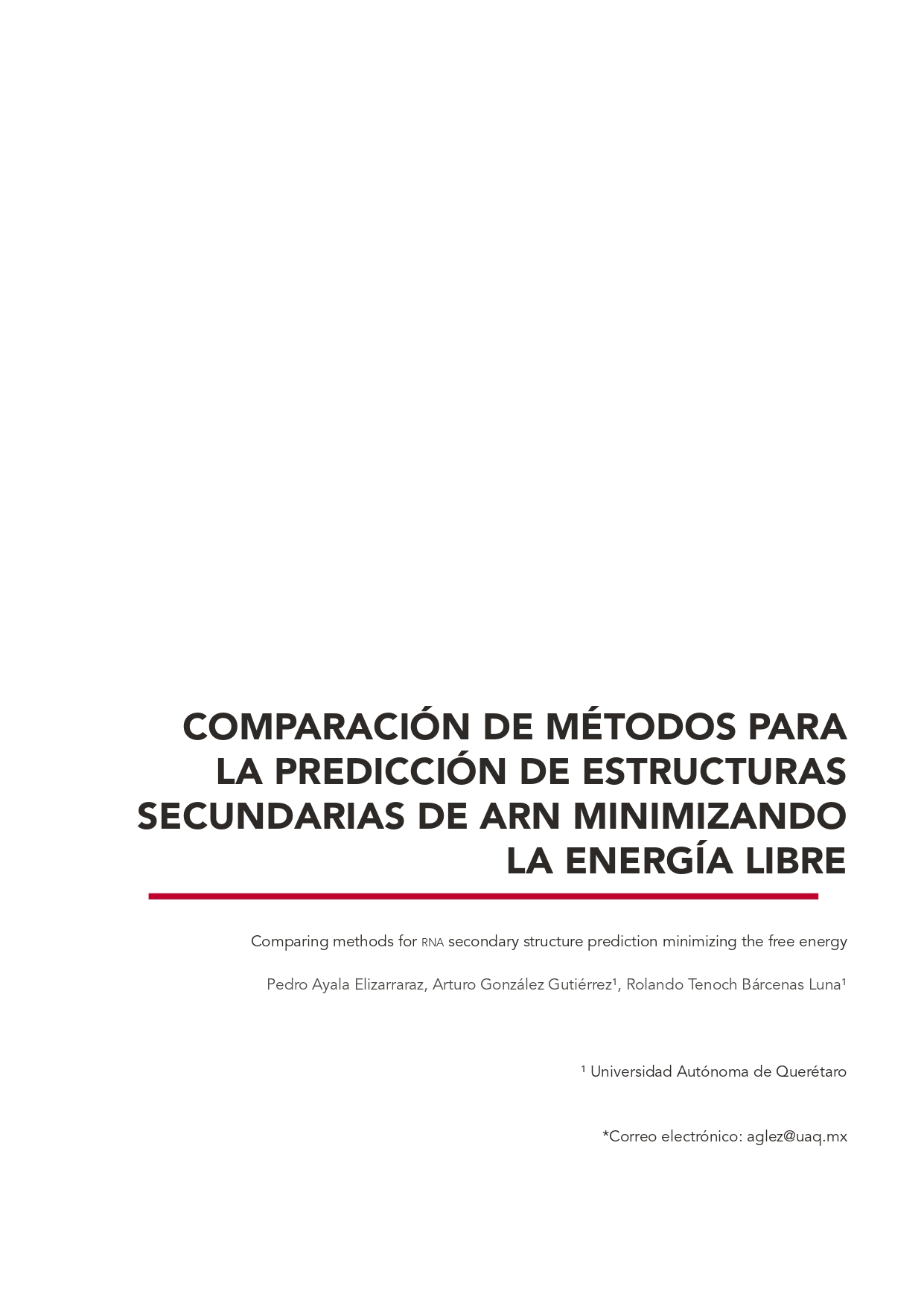Resumen
El comportamiento de una molécula de ARN depende directamente de sus estructuras secundarias y terciarias. Sin embargo, se ha demostrado que la predicción de estructuras secundarias con pseudonudos arbitrarios es un problema NP-completo. En este artículo presentamos un estudio comparativo de tres algoritmos basados en la técnica de programación dinámica. Los algoritmos de Nussinov y Zuker predicen estructuras secundarias sin pseudonudos, mientras que el algoritmo de Akutsu lo hace con pseudonudos simples. Asimismo, se muestra una metaheurística que utiliza un algoritmo genético para producir subestructuras cuasióptimas que a su vez permiten la predicción de estructuras secundarias con pseudonudos simples. Finalmente, se aborda un análisis experimental de los cuatro algoritmos utilizando instancias públicas de estructuras de ARN provistas por las bases de datos RNA STRAND y PseudoBase++.

Esta obra está bajo una licencia internacional Creative Commons Atribución-NoComercial 4.0.
Derechos de autor 2022 Perspectivas de la Ciencia y la Tecnología

